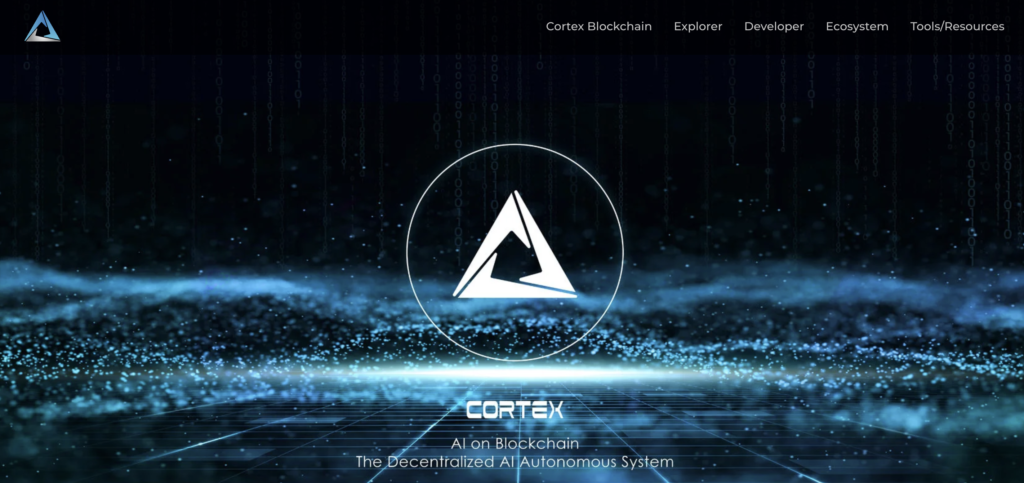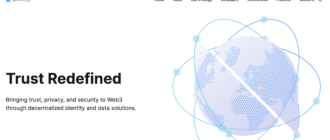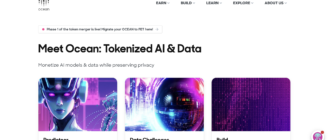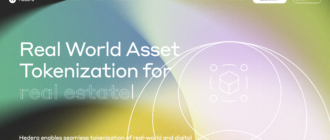This article provides an in-depth analysis of Cortex, a blockchain project that integrates artificial intelligence (AI) into decentralized applications (DApps) through smart contracts. The Cortex platform and its native cryptocurrency, CTXC, present unique advancements in combining AI and blockchain technology. Throughout this article, we will explore the various facets of Cortex, including its foundational concepts, technological framework, tokenomics, ecosystem, growth prospects, and future outlook.

What is Cortex?
Cortex is an innovative blockchain platform designed to integrate artificial intelligence (AI) into smart contracts and decentralized applications (DApps). It aims to provide a decentralized infrastructure that allows developers to deploy AI models directly on the blockchain. This integration enables AI-powered DApps to execute machine learning models in a trustless, transparent, and secure manner. Cortex addresses the critical challenge of deterministic on-chain AI inference, which ensures consistent and accurate AI computations across all nodes in the network. The Cortex Virtual Machine (CVM) extends the Ethereum Virtual Machine (EVM) with AI capabilities, leveraging GPU-based inference to support complex AI models on-chain.
Project History
Cortex was founded in 2018 with the goal of creating a decentralized ecosystem for AI on the blockchain. The project’s initial development focused on creating the Cortex Virtual Machine (CVM), which is fully compatible with Ethereum’s EVM but with added support for AI model inference.
Key milestones in the project’s development include:
- 2018: Launch of the Cortex project and its initial coin offering (ICO), which successfully raised 40,000 ETH.
- 2019: Development and release of the Cortex Testnet, enabling developers to test AI models and smart contracts on the blockchain.
- 2020: Launch of the Cortex Mainnet, allowing for the deployment of AI-powered DApps and smart contracts on a live blockchain.
- 2021: Introduction of the ZkMatrix Layer 2 solution, which utilizes zkRollup technology to enhance scalability and reduce transaction costs.
- 2022: Expansion of the Cortex ecosystem with the development of additional tools and resources for AI researchers and developers, including a model submission framework and an open model library.
Throughout its history, Cortex has focused on building a collaborative community of AI researchers and blockchain developers, promoting the sharing and optimization of AI models on a decentralized platform.
How Cortex Works
Cortex operates on a sophisticated blend of blockchain and AI technologies to bring machine learning capabilities to decentralized applications. The core of Cortex’s technological infrastructure includes the Cortex Virtual Machine (CVM), the AI inference engine, and a unique consensus mechanism.
Cortex Virtual Machine (CVM)
The Cortex Virtual Machine (CVM) is a pivotal component of the Cortex blockchain, designed to be EVM-compatible while incorporating AI functionalities. Unlike traditional EVMs that execute smart contracts using CPU resources, the CVM utilizes GPU-based inference to efficiently run complex AI models. This allows developers to deploy and execute AI algorithms directly on the blockchain, facilitating the creation of AI-enhanced smart contracts and DApps. The CVM supports deterministic AI inference, ensuring that AI model outputs are consistent and reproducible across all network nodes.
AI Inference Engine
At the heart of Cortex’s AI capabilities is the deterministic AI inference engine known as Synapse. This engine guarantees that the same AI model, when executed across different nodes, produces identical results. This determinism is crucial for maintaining the integrity and reliability of smart contracts that incorporate AI. The inference engine allows for the on-chain execution of AI models, which distinguishes Cortex from other blockchains that require off-chain AI processing.
Blockchain and Consensus Mechanism
Cortex operates on a public blockchain designed to support AI computations. Initially, Cortex utilized a Proof of Work (PoW) consensus mechanism, similar to that of Ethereum and Bitcoin, ensuring network security and decentralization. This PoW system enabled miners to validate transactions and execute AI inferences using their computational resources, primarily GPUs.
However, to address scalability and performance issues, Cortex has integrated Layer 2 solutions like ZkMatrix, which employs zkRollup technology. ZkMatrix aggregates multiple transactions into a single batch that is processed on the main chain, significantly increasing the network’s transaction throughput and reducing gas fees.
Technical Details
- AI Model Integration: Cortex allows AI developers to upload and deploy their models on the blockchain. These models are stored on the Cortex storage layer, making them accessible for inference by smart contracts.
- Inference Execution: When a smart contract requiring AI inference is executed, the full nodes on the Cortex network perform the inference using the CVM. The deterministic nature of the Synapse engine ensures uniform results across all nodes.
- Gas Optimization: By leveraging GPU for inference and employing zkRollup technology, Cortex optimizes transaction costs and enhances the overall efficiency of running AI models on the blockchain.
Unique Differentiators
Cortex stands out from other blockchain projects due to its seamless integration of AI into smart contracts and its focus on deterministic on-chain AI inference. While many blockchains rely on off-chain processing for complex computations, Cortex provides an on-chain solution that maintains the decentralized and transparent nature of blockchain technology. Additionally, the use of GPU for AI model execution and the implementation of zkRollup technology for scalability positions Cortex as a leading platform for AI-enhanced DApps.
Through these innovations, Cortex not only addresses the limitations of traditional blockchains in handling AI tasks but also creates a collaborative environment for AI researchers and developers to share and monetize their models within a decentralized framework.
Tokenomics of Cortex (CTXC)
Cortex utilizes a token called CTXC, which functions as the native currency within the Cortex ecosystem. Unlike a coin, which typically refers to a cryptocurrency that operates on its own blockchain (e.g., Bitcoin, Ethereum), a token represents an asset or utility that resides on another blockchain infrastructure. CTXC is an ERC-20 token deployed on the Ethereum blockchain and is essential for facilitating transactions, executing smart contracts, and incentivizing contributions within the Cortex network.
Emission Model and Distribution
CTXC has a fixed total supply of 299,792,458 tokens. The emission model and initial distribution were designed to ensure a balanced allocation for various stakeholders and to support the ecosystem’s growth and development. Here is a breakdown of the initial distribution:
| Category | Allocation | Description |
|---|---|---|
| Private Sale | 20.01% (60 million) | Tokens sold to early investors during the private sale. |
| Mining Rewards | 50.03% (150 million) | Allocated to incentivize miners for securing the network and processing transactions. |
| Foundation | 24.95% (74,792,458) | Reserved for the Cortex Foundation to support ongoing development and operations. This includes: |
| – Genesis Block | 14.01% | Initial allocation for project launch and operational expenses. |
| – Bounties | 0.93% | Rewards for community contributions and bug bounties. |
| – Marketing | 9.01% | Funds for promoting the project and expanding its user base. |
| – Cortex Lab | 15.01% | Allocation for research and development initiatives within Cortex Labs. |
| Community & Advisors | 5.00% | Distributed among early supporters, advisors, and academic partners. |
Use Cases and Incentives
CTXC tokens serve multiple purposes within the Cortex ecosystem:
- Transaction Fees: CTXC is used to pay for transaction fees on the Cortex blockchain, ensuring that operations such as deploying and executing AI-enhanced smart contracts are carried out securely and efficiently.
- Incentives for Model Submission: Developers and researchers who contribute AI models to the Cortex platform are rewarded with CTXC tokens. This incentivizes the continuous growth of the AI model repository and fosters a collaborative environment.
- Staking and Governance: CTXC holders can participate in staking to support network security and governance. Through staking, users can vote on critical decisions affecting the network, such as protocol upgrades and parameter adjustments.
Market Performance
As of the latest data, the circulating supply of CTXC is approximately 221.09 million tokens. The token has experienced significant fluctuations in its market price since its inception. Key price metrics include:
- All-Time High (ATH): $2.41, achieved in April 2018.
- Current Price: Approximately $0.32.
- Market Capitalization: Around $71.06 million.
- 24-Hour Trading Volume: Approximately $2.4 million.
Future Prospects
The tokenomics of CTXC are structured to support the long-term sustainability and growth of the Cortex platform. By aligning incentives across developers, miners, and the community, Cortex aims to build a robust ecosystem where AI and blockchain technologies converge, driving innovation and expanding the possibilities of decentralized applications.
Where to Buy CTXC
CTXC, the native token of the Cortex blockchain, can be purchased on several major cryptocurrency exchanges. Below is a list of recommended exchanges where you can trade CTXC:
- Binance: Binance offers a user-friendly interface and high liquidity for trading CTXC. It supports various trading pairs, making it easy to buy CTXC with other cryptocurrencies like BTC and ETH.
- HTX (formerly Huobi): HTX provides robust trading options and advanced security features. It is a popular exchange for trading CTXC, offering multiple trading pairs and competitive fees.
- MEXC: MEXC is known for its extensive range of listed tokens and user-centric features. It supports CTXC trading with various pairs and provides a seamless trading experience.
- BingX: BingX is another excellent choice for trading CTXC, known for its wide range of supported assets and user-friendly platform. It provides various CTXC trading pairs and advanced trading tools.
Where to Store CTXC
Storing CTXC securely is crucial for protecting your investment. Below are some recommended wallets that support CTXC:
- Cortex Wallet: The official Cortex Wallet offers a dedicated solution for storing CTXC. It is designed to integrate seamlessly with the Cortex blockchain, providing secure storage and easy access to your tokens.
- MetaMask: MetaMask is a popular Ethereum-based wallet that supports ERC-20 tokens, including CTXC. It offers a browser extension and mobile app, allowing you to manage your tokens and interact with decentralized applications.
- Trust Wallet: Trust Wallet is a mobile wallet that supports a wide range of cryptocurrencies, including CTXC. It provides a user-friendly interface and robust security features, making it a reliable choice for storing your tokens.
- Ledger Nano S/X: Ledger hardware wallets offer top-notch security for storing CTXC. These wallets keep your private keys offline, protecting your assets from potential online threats.
- MyEtherWallet (MEW): MEW is a versatile Ethereum wallet that supports ERC-20 tokens. It offers a web-based interface and hardware wallet integration for enhanced security.
By using these wallets, you can ensure the safe storage of your CTXC tokens, manage your holdings effectively, and interact with the Cortex ecosystem securely.
Project Prospects
The growth of the Cortex project is grounded in its innovative approach to integrating artificial intelligence (AI) with blockchain technology. By enabling AI-powered smart contracts and decentralized applications (DApps), Cortex addresses a significant niche within the blockchain ecosystem. Here are the key factors contributing to its potential growth:
Growth Basis
- Technological Innovation: Cortex’s unique capability to execute AI models directly on the blockchain sets it apart from other projects. This innovation attracts developers interested in leveraging AI for decentralized applications, thereby expanding the user base and ecosystem.
- Scalability Solutions: The implementation of Layer 2 solutions, such as ZkMatrix, enhances Cortex’s scalability by increasing transaction throughput and reducing costs. This makes the platform more attractive for large-scale applications and enterprise use.
- Developer Engagement: Cortex actively fosters a collaborative environment for AI researchers and blockchain developers through its model submission framework and incentive mechanisms. This encourages continuous contributions and improvements to the AI models available on the platform.
Clients and Partners
Cortex’s clientele and partnerships are pivotal to its expansion. The project collaborates with various organizations and academic institutions, enhancing its credibility and reach. Key partners include:
- Bitmain: A leading cryptocurrency mining company that participated in Cortex’s initial funding rounds.
- FBG Capital: An investment firm specializing in blockchain technology.
- Academic Institutions: Collaborations with universities and research institutions to advance AI research and development on the blockchain.
Development Forecast
Given the current trajectory, Cortex is well-positioned for sustained growth. The increasing adoption of AI technologies and the growing interest in blockchain-based solutions create a favorable environment for Cortex. The project aims to continuously expand its ecosystem, attract more developers, and form strategic partnerships that enhance its technological capabilities and market presence.
Project Ecosystem
The Cortex ecosystem is designed to support a diverse range of participants, including AI developers, blockchain developers, researchers, and end-users. The following components are integral to the ecosystem:
- Cortex Virtual Machine (CVM): Enables the integration and execution of AI models within smart contracts.
- Model Submission Framework: Allows developers to upload and monetize their AI models on the Cortex blockchain.
- ZkMatrix Layer 2 Solution: Enhances scalability and reduces transaction costs, making the platform more efficient and accessible.
- Cortex Wallet: Provides a secure means for users to store and manage their CTXC tokens.
- Open Model Library: A repository of AI models available for use in developing smart contracts and DApps.
- Community Incentives: Programs to reward contributions from developers and researchers, fostering a collaborative environment.
The combined efforts of these components create a robust and dynamic ecosystem that supports the development and deployment of AI-powered blockchain applications. The continuous evolution of this ecosystem is crucial for Cortex’s long-term success and competitiveness in the blockchain space.
Conclusion
Cortex represents a pioneering step in the convergence of AI and blockchain technologies. By facilitating the integration of AI models within smart contracts, Cortex aims to create a robust ecosystem where developers and researchers can innovate and collaborate. The project’s focus on decentralized AI model execution and its incentivization mechanisms highlight its potential to drive significant advancements in both AI and blockchain domains. As Cortex continues to evolve, its impact on these fields will be an essential area to watch.






